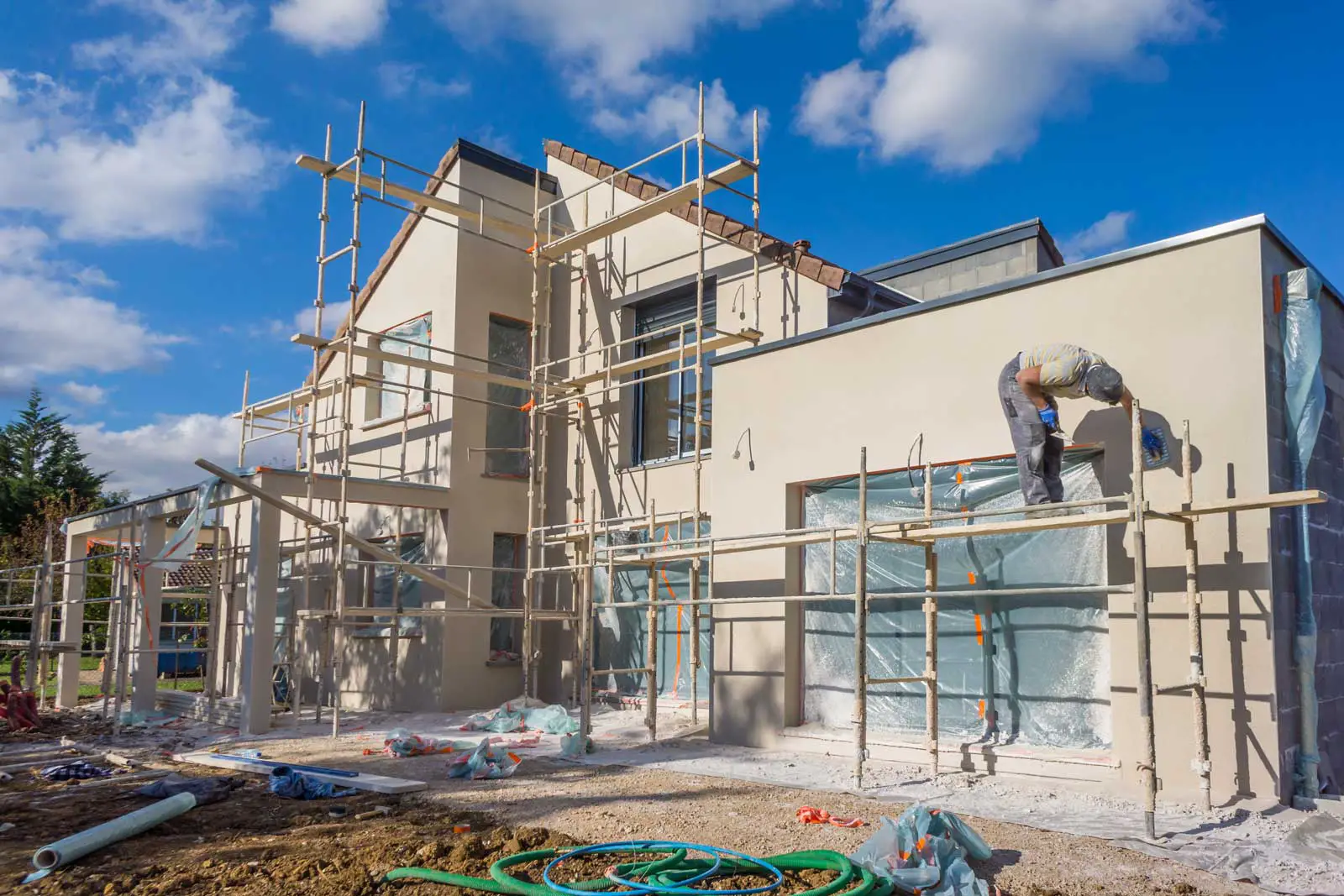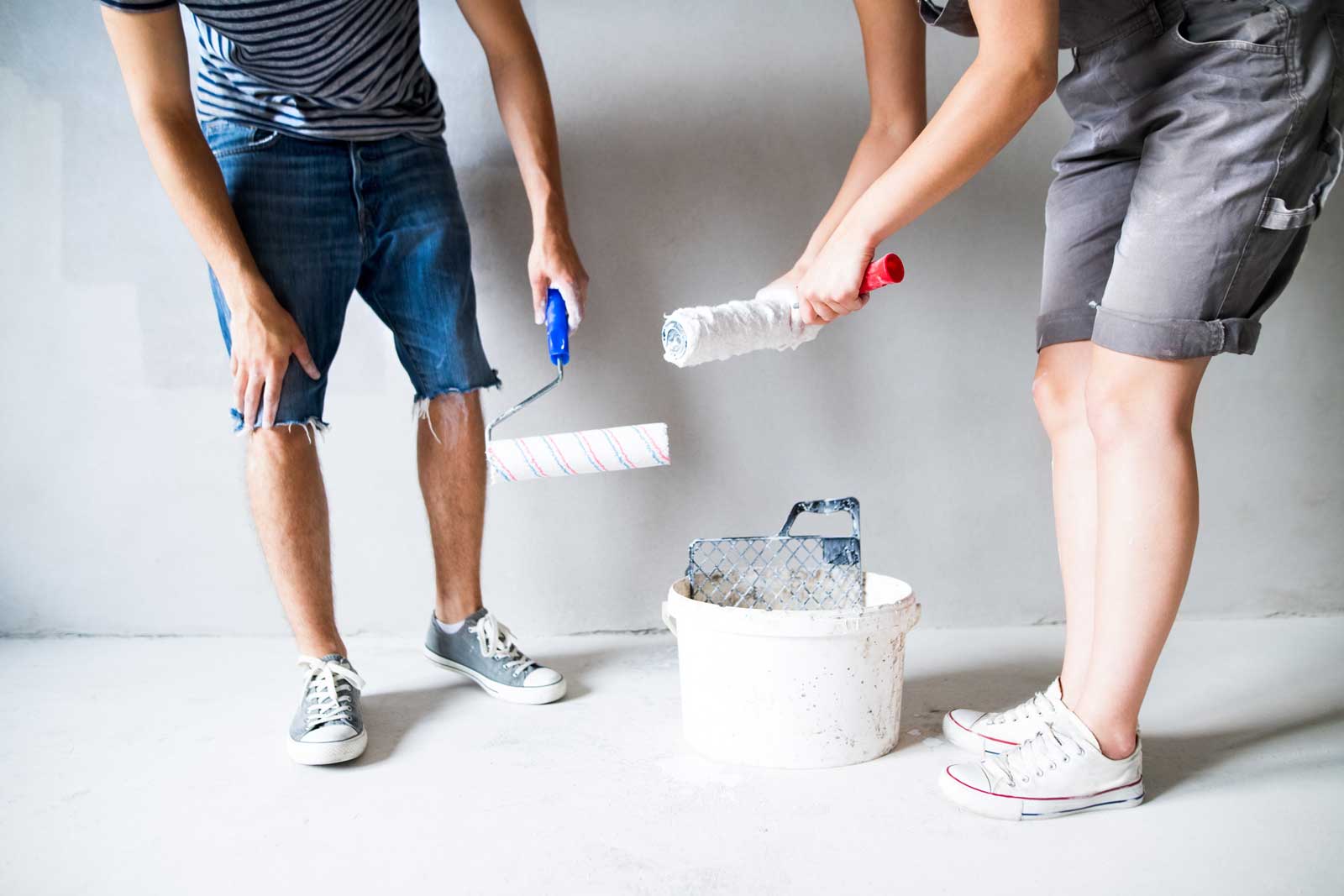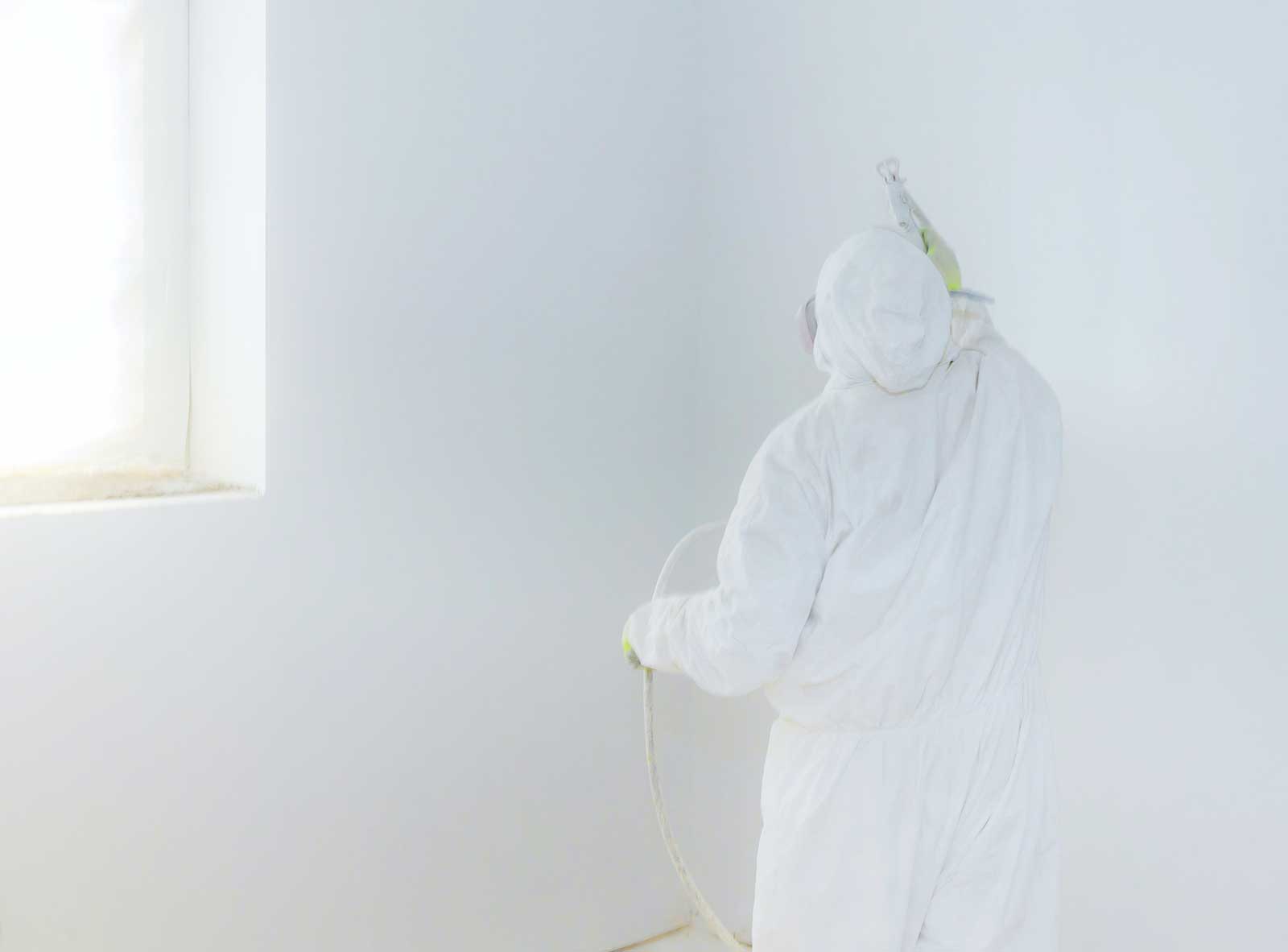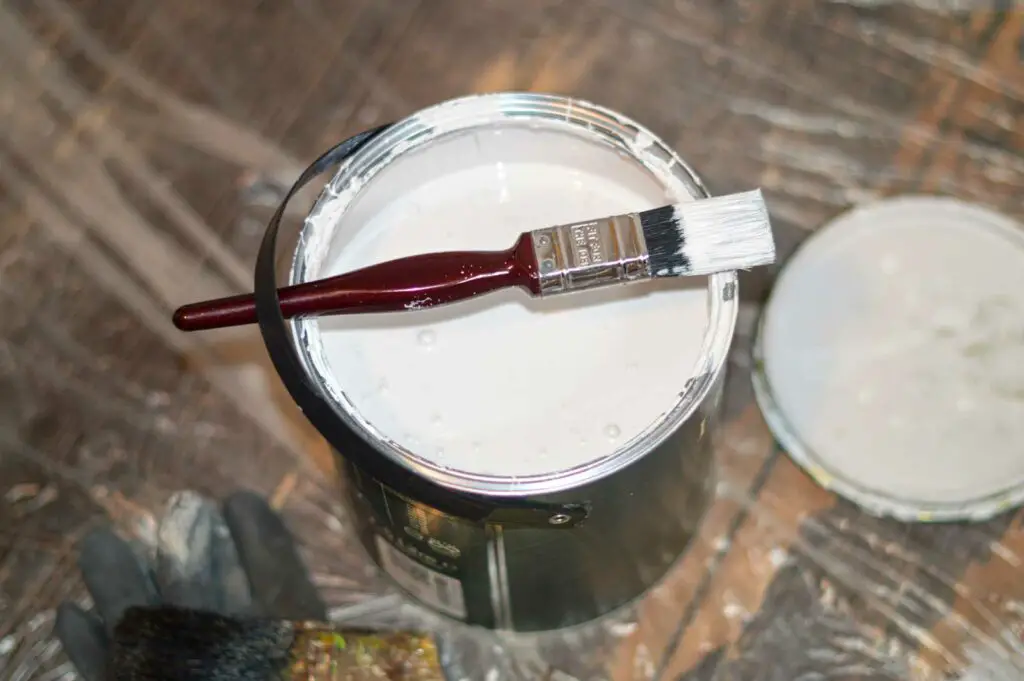Have you ever wondered if you could use paint primer as a top coat? While it may seem like a good idea, there are some important factors to consider before using primer as a top coat.
Primer and top coat serve different purposes, so it’s important to understand the differences. Primer is designed to create a surface that paint can adhere to, while top coat is meant to protect the surface and provide a finished look. Top coats are typically more durable and resistant to wear and tear than primer.
So can you use primer paint as top coat?
No, you shouldn’t use primer as a top coat because it’s not formulated to withstand the elements and should be top coated shortly after application to ensure proper bonding. Primer’s flat sheen does not hold up as well to sun, rain, and dirt as satin or glossy paints.
In this article, we’ll explore whether or not it’s possible to use paint primer as a top coat and what the potential drawbacks might be. We’ll also discuss some alternatives to using primer as a top coat if you’re looking for a more durable and long-lasting finish.
By the way – before we get too far along here, if you want to connect with other homeowners, DIYers, and builders and get more great ideas for your home to make your space the best join my free private Facebook group, Remodel Reality here.
 Primer vs. Top Coat
Primer vs. Top Coat
When starting a painting project, it’s important to understand the differences between primer and top coat. Primer is the first coat of paint applied to a surface, while top coat is the final coat applied after the primer has dried. Both have different functions and serve different purposes. In this section, we’ll explore the differences between primer and top coat, and why it’s important to use each one in the right way.
Explanation of Primer and Its Function
Primer is a preparatory coating that is applied to a surface before the actual paint is applied. Its main function is to create a uniform surface for the paint to adhere to. Primer also helps to cover up any surface stains, crayon marks, or smoke stains that may be present. It is especially important to use a primer coat on porous surfaces like bare wood, bare drywall, or ceramic tile. Without a primer coat, the paint will not adhere properly and may peel or crack over time.
There are different types of primers available, including oil-based primer, water-based primer, shellac-based primer, and specialty primer. The type of primer you choose will depend on the surface you’re painting and the type of paint you’re using for the top coat. For example, if you’re painting metal surfaces, you’ll want to use a bonding primer that will adhere to the metal and provide a stable surface for subsequent coats of paint.
Explanation of a Top Coat and Its Function
The top coat is the final coat of paint applied to a surface after the primer coat has dried. Its main function is to provide the final color and protection to the surface. The top coat is what people see when they look at your painted surface, so it’s important to choose the right paint color and type of paint for the job. There are different types of paint available, including oil-based paint, latex paint, and self-priming paint. The type of paint you choose will depend on the surface you’re painting and the finish you want to achieve.
It’s important to note that a top coat should never be used as a primer coat. While it may be tempting to skip the primer coat and go straight to the top coat, this is not a good idea. Without a primer coat, the paint may not adhere properly and may peel or crack over time. Always use a primer coat for the best results.
Differences Between Primer and Top Coat
The main difference between primer and top coat is their function. Primer is used to create a uniform surface for the paint to adhere to, while top coat is used to provide the final color and protection to the surface. Another difference is their composition. Primer is usually thicker and more adhesive than regular paint, while top coat is usually thinner and more liquid. Primer also comes in different colors, including white primer and tinted primer, while top coat comes in a wide range of colors to choose from.
It’s important to use the right primer for the job. For example, if you’re painting a surface with water stains, you’ll want to use an oil-based primer that will seal the stains and prevent them from bleeding through the new paint. If you’re painting a surface with a dark color and want to change it to a lighter color, you’ll want to use a white primer to ensure that the new color comes out true to its shade.
Overall, using the right primer and top coat for your painting project is essential for achieving a high quality, long-lasting finish. Don’t skimp on the prep work and make sure you have the right tools for the job. With the right primer and top coat, you can achieve a smooth surface and a beautiful finish that will last for years to come.
 Can Primer be Used as a Top Coat?
Can Primer be Used as a Top Coat?
If you’re planning on painting a surface, you may be wondering if you can use primer as a top coat. The short answer is no, you cannot use primer as a final coat of paint. However, there are some exceptions to this rule.
The General Rule
The general rule is that primer should be covered with a top coat of paint or sealer. Primer is designed to prepare the surface for subsequent coats of paint, not to be the final coat. Using primer as a top coat will not give you the best results and may lead to problems down the road.
Why it’s not a Good Idea
Primer is not formulated to be a top coat. It is meant to be a base coat that prepares the surface for subsequent coats of paint. Primer does not have the same sheen, durability, or color as paint, and using it as a top coat can result in a lackluster finish that is not as durable as a finish coat of paint.
What Happens if You Just Use Primer?
If you just use primer without a top coat of paint or sealer, the surface will be porous and susceptible to damage. The primer will not provide the same level of protection as a finish coat of paint or sealer, and the surface will be more prone to stains, scratches, and other types of damage.
Primer’s Sheen and Durability
Primer has a flat or matte sheen, which is not as durable as the sheen of a finish coat of paint. The sheen of a finish coat of paint is more resistant to wear and tear, making it a better option for surfaces that will be subject to heavy use. Additionally, primer does not have the same level of durability as a finish coat of paint, which means it may not hold up as well over time.
How Long Can You Leave Primer Before Top Coat?
You can leave primer on a surface for an extended period of time before applying a top coat of paint or sealer. However, it is best to apply the top coat within a few days of applying the primer to ensure the best adhesion and finish. If you wait too long, the primer may become too dry and lose its ability to bond with the subsequent coats of paint.
Can You Leave Primer as a Top Coat?
While you can technically leave primer as a top coat, it is not recommended. Primer is not formulated to be a final coat of paint, and using it as such can result in a lackluster finish that is not as durable as a finish coat of paint. Additionally, leaving primer as a top coat may result in a surface that is more prone to stains, scratches, and other types of damage.
Can Primer be Used as the Finish Coat of Paint?
Simply put, you cannot use primer as a final coat of paint. Primer and paint have different purposes, and using primer as a top coat will not give you the best results. If you want a high-quality, long-lasting finish, it is best to use the right primer for your surface and follow it up with a finish coat of paint or sealer.
When it comes to painting, using the right products and techniques is key to achieving a high-quality, long-lasting finish. Choosing the right primer is an important part of the painting process, as it prepares the surface for subsequent coats of paint and ensures a uniform surface. There are many different types of primers available, including oil-based primers, water-based primers, shellac-based primers, and specialty primers for surfaces like ceramic tile and metal. Your best bet is to consult a paint primer guide or talk to a professional painter to determine the right primer for your painting project.
 Painting Process
Painting Process
When it comes to painting, using the right tools and products is crucial for achieving the best results. The proper sequence of painting is primer, base coat, and top coat. By following this sequence, you can ensure that the paint will adhere to the surface properly and last for a long time.
The proper sequence: primer, base coat, top coat
Using primer before applying the base coat is a good idea, especially if you’re painting porous surfaces like bare wood or raw drywall. Primer helps to create a stable surface for the subsequent coats of paint, and it also helps the paint to bond better to the surface. When using primer, it’s important to choose the right type of primer for the surface you’re painting. There are different types of primers available, including oil-based, water-based, latex, shellac-based, and specialty primers.
Do I need two coats of paint if I use primer?
The general rule of thumb is to use one coat of primer and two coats of paint for the best results. However, if you’re using a self-priming paint, you may only need two coats of paint. If you’re painting a darker color over a lighter color, you may need to use more coats of paint to achieve the desired color.
What happens if you put primer on top of paint?
Putting primer on top of paint is not recommended because the primer won’t adhere properly to the surface. Primer is designed to be used as a base coat, not a top coat. If you’re painting over an existing paint color, it’s best to use a separate primer and then apply the new coat of paint.
What goes first top coat or primer?
Primer should always go first before the top coat. Primer is designed to create a uniform surface for the subsequent coats of paint, while the top coat is the final color that you see. Applying the top coat before the primer can result in an uneven finish and poor adhesion.
How many coats of paint after primer?
As mentioned earlier, the general rule of thumb is to use one coat of primer and two coats of paint for the best results. However, the number of coats of paint you need may vary depending on the surface you’re painting and the type of paint you’re using. It’s important to read the paint manufacturer’s instructions to determine how many coats of paint you need.
Can you just clear coat over primer?
You can clear coat over primer, but it’s not recommended. Clear coat is designed to be used as a top coat, not a base coat. If you’re using primer, it’s best to apply the base coat and then the top coat for the best results.
Types of Primers
If you’re wondering whether you can use primer as top coat, the short answer is no. However, using the right type of primer can make all the difference in achieving the best results for your painting project. Here are some of the most common types of primers:
Oil-based primer
If you’re painting raw wood, metal surfaces, or exterior surfaces, an oil-based primer is a good idea. It provides a stable surface for subsequent coats of paint and helps prevent surface stains like water stains or smoke stains from bleeding through. Just keep in mind that oil-based primers take a long time to dry and can have a strong odor.
Water-based primer
Water-based primers are a good choice for interior walls and surfaces in good condition. They dry quickly, have a low odor, and clean up easily with water. However, they may not be the best bet for porous surfaces like bare wood or ceramic tile, as they don’t penetrate as deeply as oil-based primers.
Latex primer
Latex primers are similar to water-based primers, but they’re specifically designed for use with latex paint. They provide a smooth surface for subsequent coats of paint and are a good choice for surfaces that are already painted with latex paint. However, they may not be the best choice for slick surfaces or surfaces that have crayon marks or other stains, as they may not provide adequate coverage.
Shellac-based primer
Shellac-based primers are a good choice for surfaces that are difficult to paint, such as glossy surfaces or surfaces that have been previously painted with oil-based paint. They dry quickly and provide a uniform surface for subsequent coats of paint. However, they may not be the best choice for surfaces that are in poor condition, as they don’t provide as much coverage as other types of primers.
Specialty primer
There are many different types of specialty primers available, each designed for a specific type of surface or painting project. For example, there are primers designed for painting over dark colors, primers designed for painting over lighter colors, and primers designed for painting over surfaces that have been previously painted with a different type of paint. Your best bet is to consult a paint primer guide or talk to a professional painter to determine the right primer for your specific project.
Bonding primer
If you’re painting a surface that has been previously painted with a different type of paint, a bonding primer is a good choice. It helps the new coat of paint adhere to the surface, providing a high-quality, long-lasting finish. Just keep in mind that a bonding primer should only be used on a stable surface that is in good condition.
Tinted primer
If you’re painting over a dark color with a new color, a tinted primer can help you achieve the new color more easily. It provides a base color that is closer to the new color, reducing the number of coats of paint you’ll need to apply. However, it’s important to choose the right tinted primer for the color you’re using, as different products may have different base colors.
Best primers
The best primers for your painting project will depend on the type of surface you’re painting, the type of paint you’re using, and the final color you’re trying to achieve. Some of the best paint primers on the market include Sherwin Williams, Craftnique Color Boutique, and Flip’n Awesome. However, it’s important to choose a high-quality primer from a reputable paint manufacturer, rather than relying on a cheap product from a big box store.
 When Should You Use Primer?
When Should You Use Primer?
Using a primer coat before painting can make all the difference in achieving the best results for your painting project. Here are some situations where using a primer coat is highly recommended:
Painting Porous Surfaces
If you’re painting a porous surface like bare wood or new drywall, applying a coat of primer will help create a uniform surface for your paint color. Without a primer coat, your paint may soak into the surface unevenly, leading to a blotchy and unprofessional finish. Applying two coats of primer is recommended for bare drywall to ensure a smooth surface.
Painting New Surface
When painting a new surface, it’s a good idea to use a separate primer coat before applying your final color. This will help the paint adhere better to the surface and provide a more stable surface for subsequent coats of paint.
Painting Exterior Surfaces
When painting exterior surfaces, it’s important to use a primer coat to protect against moisture and weathering. A good quality primer will also help the paint adhere better to the surface and provide a longer-lasting finish.
Covering Stains
If you’re painting over surface stains like water stains or smoke stains, using a primer coat is a must. This will help prevent the stains from bleeding through your final coat of paint and ensure a uniform finish.
Painting Over Dark Colors
If you’re painting over a dark color with a lighter color, using a primer coat can help ensure that the final color is true and even. Without a primer coat, the previous color may show through the new color, leading to an uneven finish.
Painting Over Oil-Based Paint
If you’re painting over oil-based paint with a water-based paint, using a primer coat is recommended. This will help the water-based paint adhere better to the surface and provide a more stable finish.
Overall, using the right primer for your painting project is essential for achieving a high quality, professional-looking finish. Different surfaces and types of paint require different types of primer, so it’s important to consult with paint manufacturers or professional painters to determine the best primer for your specific project.
Benefits of Using a Separate Primer
Before you start your painting project, you may be wondering if you should use a separate primer or if you can use paint primer as a topcoat. While some paint manufacturers claim that their paint and primer in one products can do both jobs, using a separate primer is still the best bet for achieving the best results. Here are some benefits of using a separate primer:
Better Adhesion
If you want your paint to stick to the surface and last a long time, using a separate primer is a good idea. A primer coat helps the paint bond to the surface and prevents it from peeling or chipping. This is especially important for porous surfaces like bare wood or raw drywall that can absorb paint unevenly. A good primer will create a stable surface for subsequent coats of paint.
Hides Previous Color
If you are changing the color of your walls, using a separate primer can help hide the previous color and create a uniform surface. A primer coat will also help cover up any crayon marks, water stains, or smoke stains on the walls. If you are painting a dark color over a lighter color, a white primer can help ensure that the new color looks its best.
Helps to Create a Uniform Surface
If your walls are not in good condition, a separate primer can help create a smooth surface for your paint job. If your walls have cracks, dents, or other imperfections, a coat of primer can help fill in these gaps and create a uniform surface. This is especially important if you are using a glossy paint, which can highlight any surface imperfections.
Good for Raw Wood
If you are painting raw wood, using a separate primer is essential. Raw wood is porous and can absorb paint unevenly, which can lead to a patchy finish. A wood primer will help seal the wood and prevent it from absorbing too much paint. This is especially important if you are using an oil-based paint, which can take a long time to dry on raw wood.
Remember, there are different types of primers for different purposes. For example, a bonding primer is good for slick surfaces like ceramic tile, while a shellac-based primer is good for surface stains like smoke or water stains. A tinted primer can also help if you are painting a darker color over a lighter color. If you are unsure which type of primer to use, consult with professional painters or the staff at your local big box store.
Frequently Asked Questions
When it comes to painting, there are always questions about the best way to get the job done. Here are some of the most frequently asked questions about using paint primer as a top coat:
Do you need two coats if you use primer?
The short answer is that it depends on the product you’re using. Some self-priming paints claim to eliminate the need for a separate primer, but for the best results, it’s often a good idea to use a separate primer coat. This is especially true when painting on porous surfaces like bare wood or drywall.
Can I just use paint with primer?
While some paint manufacturers claim that you can use paint with primer, it’s generally not the best bet for a high-quality paint job. Using a separate primer coat will help ensure that the final color is uniform and that subsequent coats of paint adhere properly to the surface.
How long should primer dry before top coat?
The drying time for primer varies depending on the type of primer you’re using. As a general rule, you should wait at least 24 hours before applying a top coat of paint. However, some oil-based primers may require a longer drying time, so be sure to check the product label for specific instructions.
Is primer just white paint?
No, primer is not just white paint. There are many different types of primers available, each designed for different purposes. Some common types of primer include water-based primer, oil-based primer, and shellac-based primer. Primer can also be tinted to match the color of the final coat of paint.
How many hours after primer can I paint?
As mentioned earlier, the drying time for primer varies depending on the type of primer you’re using. In general, you should wait at least 24 hours before applying a top coat of paint. However, some primers may require a longer drying time, so be sure to check the product label for specific instructions.
When should you not use primer when painting?
It’s generally a good idea to use primer when painting, especially if you’re painting over a surface that is not in good condition. However, if the surface is already in good condition and you’re painting with the same type of paint as the previous color, you may be able to skip the primer coat. Additionally, some specialty paints like high-end furniture paint or ceramic tile paint may not require a separate primer coat.
Can I use GREY primer as a top coat?
No, you should not use grey primer as a top coat. Primer is designed to be a base coat that helps subsequent coats of paint adhere properly to the surface. While some primers may be tinted to match the final color, they are not designed to be used as a top coat.
What happens if you don’t prime wood before painting?
If you don’t prime wood before painting, the paint may not adhere properly to the surface. This can result in a finish that looks uneven or blotchy. Additionally, if the wood is exposed to moisture, it may warp or become damaged over time.
How long does paint primer last?
The shelf life of primer varies depending on the type of primer you’re using. In general, water-based primers have a shorter shelf life than oil-based primers. However, if stored properly, most primers should last for a long time.
Next Steps
Want to join others who are creating the most amazing home redesigns & renovations and get more tips, tricks and hacks on how to make your home the best it can be?
Join my brand new free private Facebook group, Remodel Reality to connect with other people like you to make your space the best!






